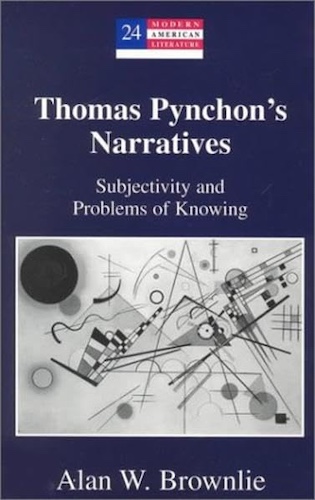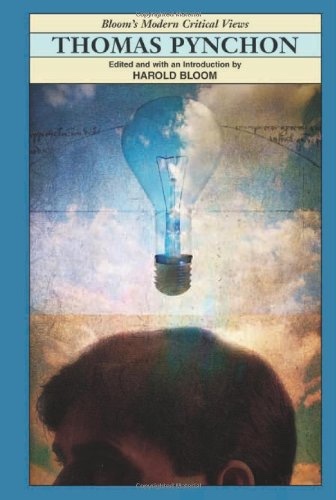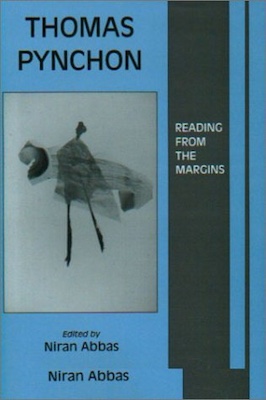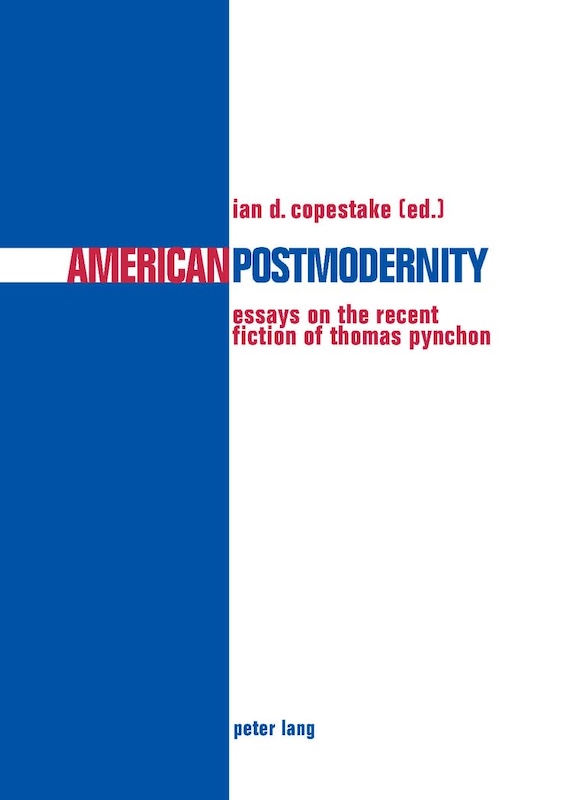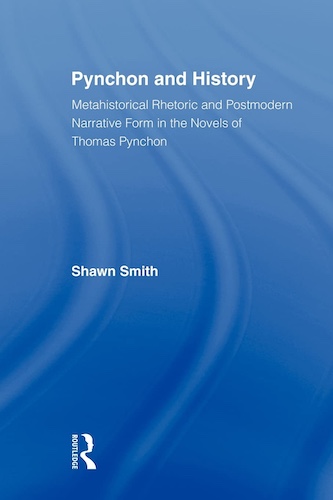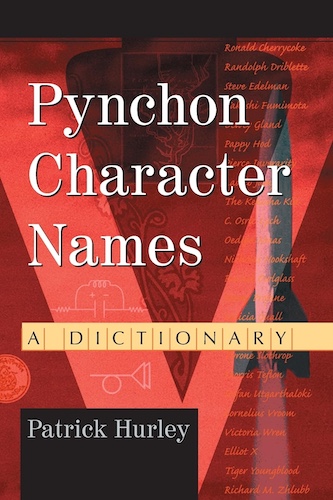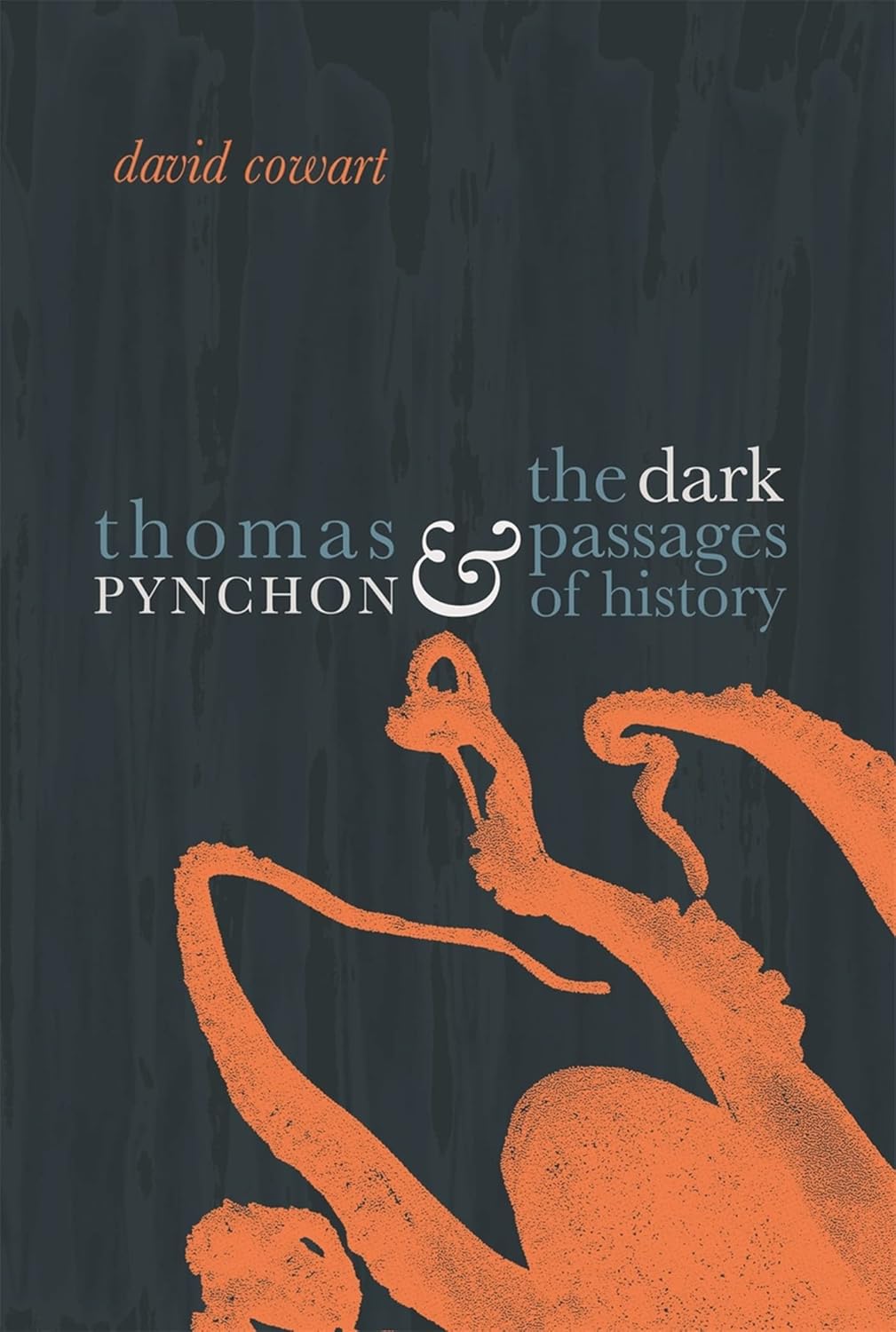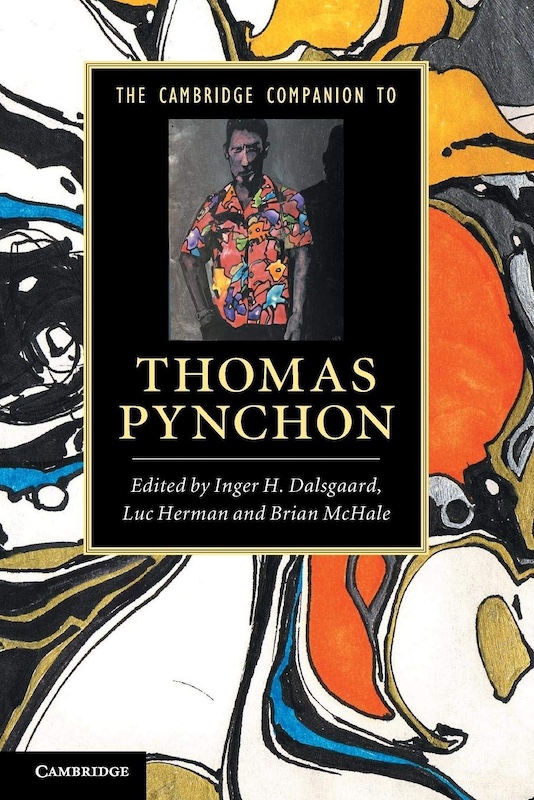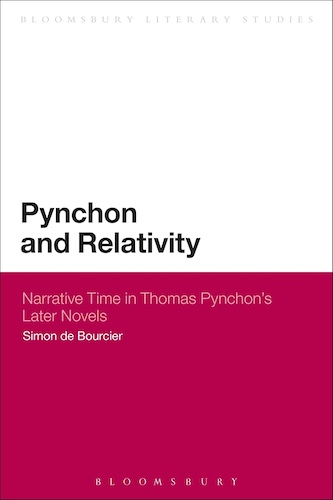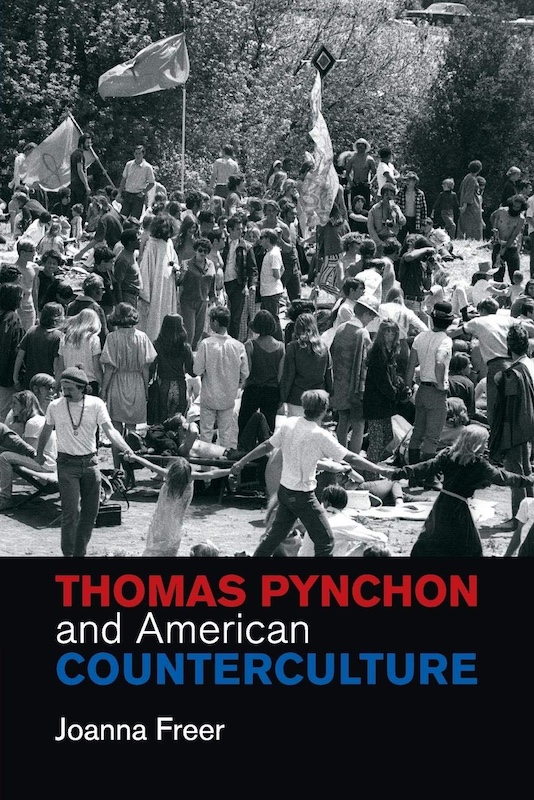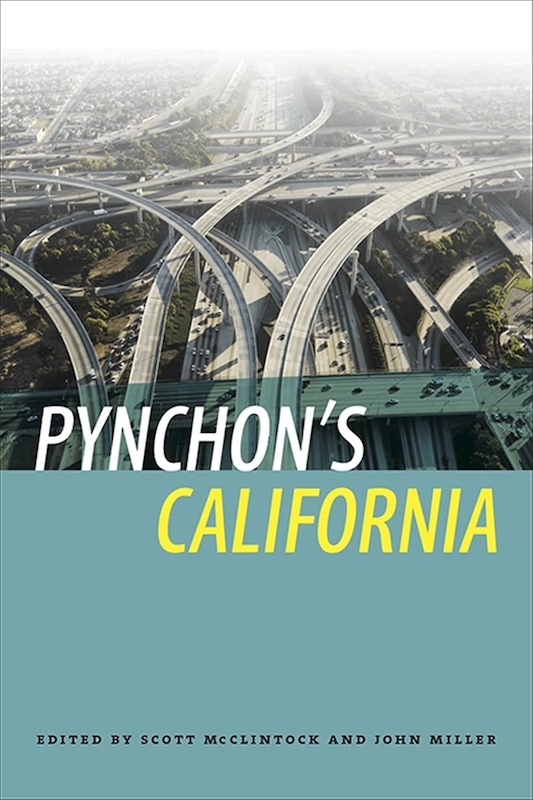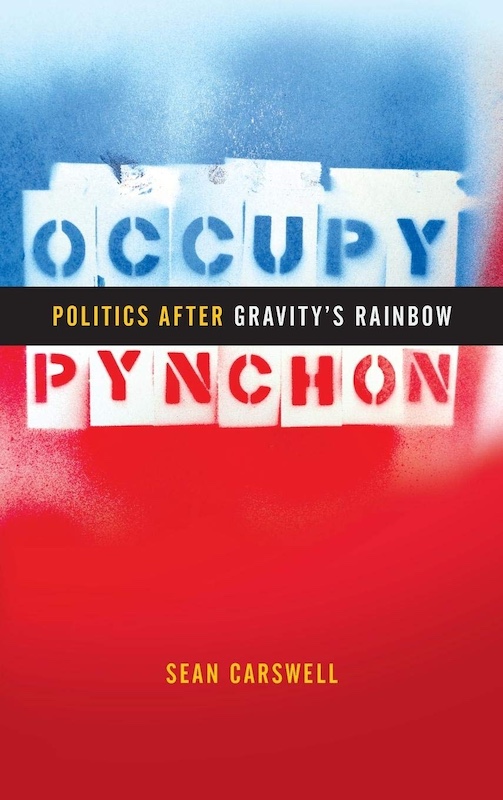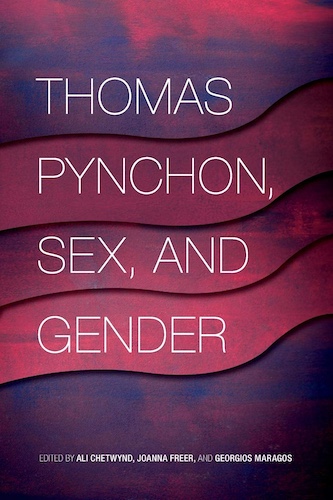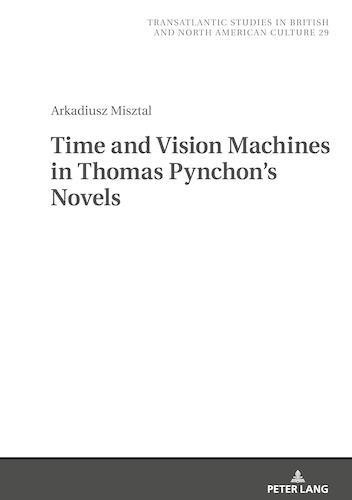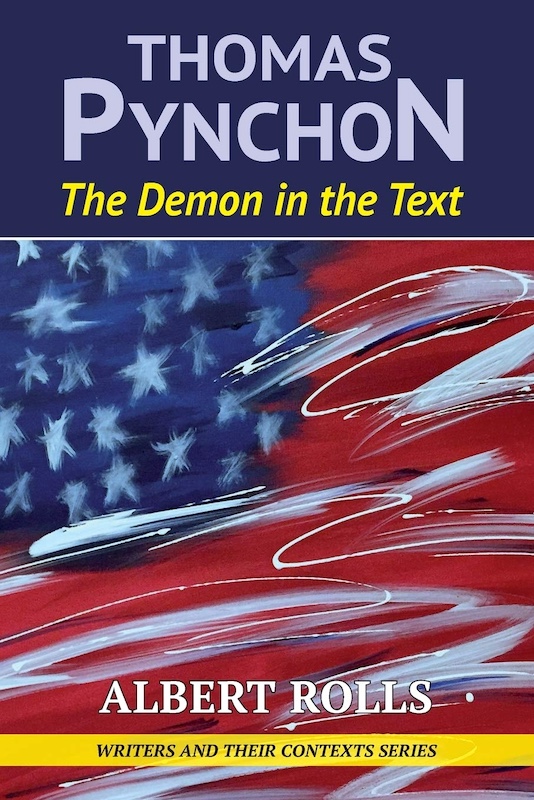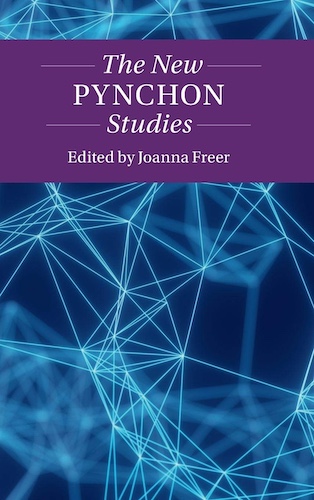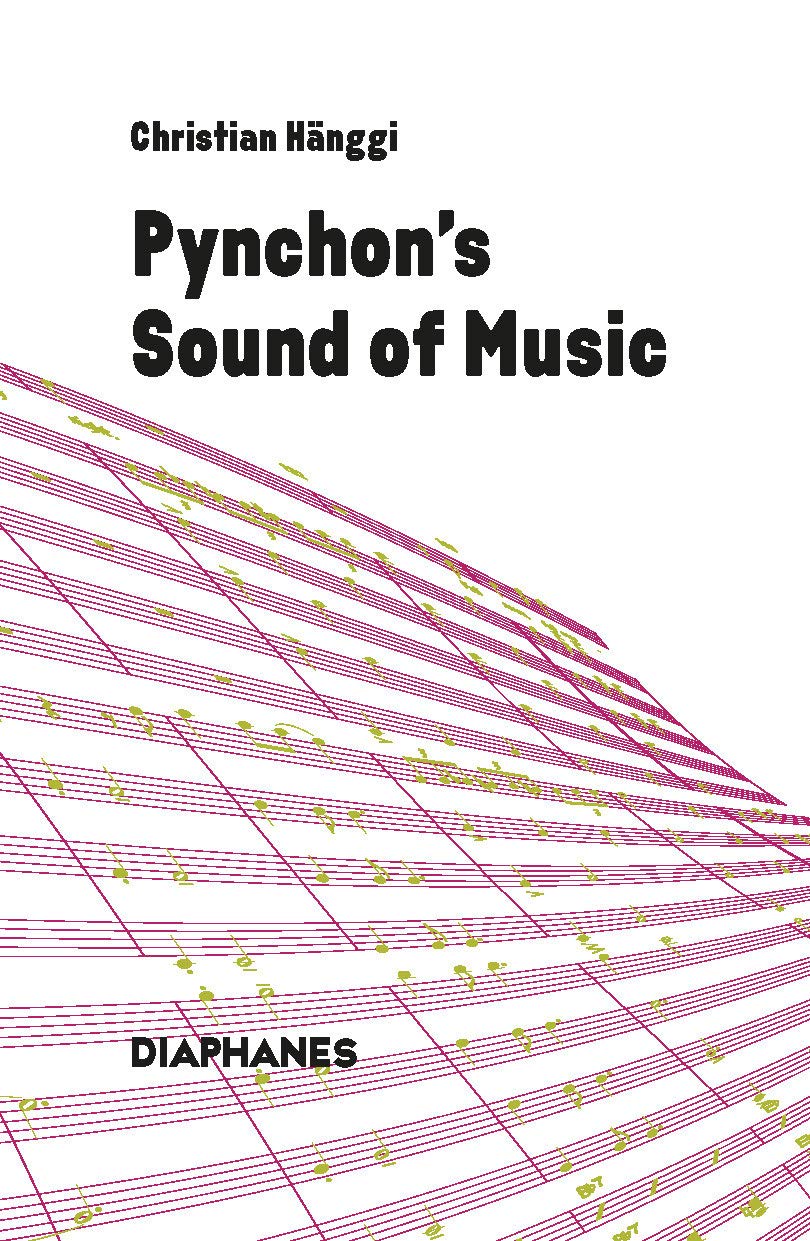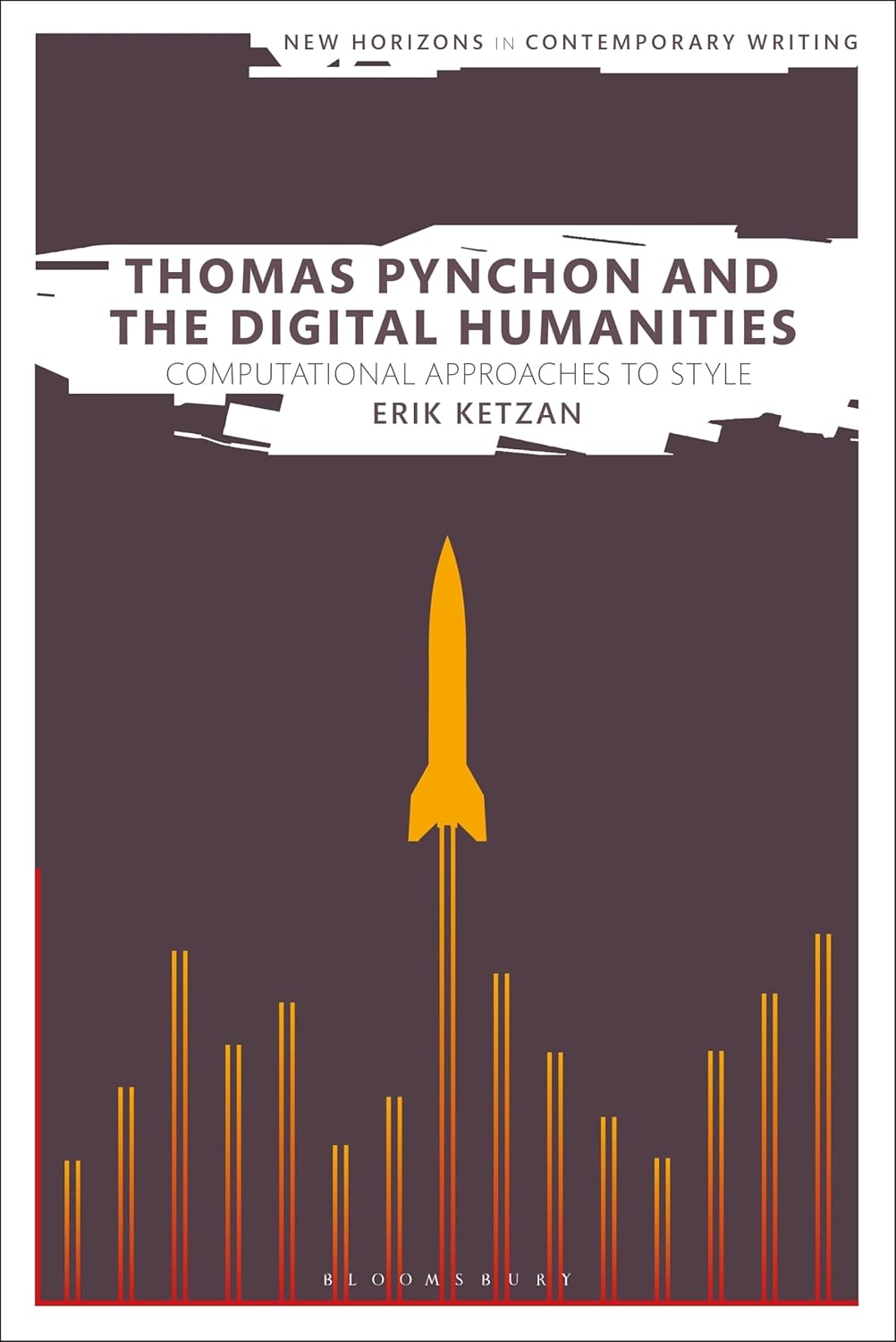Pynchon Criticism: Selected General Criticism 2
- At January 30, 2021
- By Spermatikos Logos
- In Pynchon, The Modern Word
 0
0
This is a first collection of criticism about Pynchon; perhaps with time and distance his critical reception will become more relaxed.
—“Kirkus Reviews,” 1976
Pynchon Criticism: General Criticism 2: 2000–Present
This page collects general Pynchon literary criticism; as opposed to works written about particular novels. These books were all written from 2000 onwards; for earlier criticism, see “General Criticism 1: 1974–1999.” Most of the books profiled in this section are accompanied by a brief description, a summary of contents, and the official publisher’s blurb. If any visitor would like to contribute informed commentary for any of these works, please contact Spermatikos Logos! The books are listed in chronological order of publication. Clicking the image of a book takes you directly to Amazon.
Thomas Pynchon’s Narratives: Subjectivity and Problems of Knowing
Peter Lang Publishing, 2000
Comments
Publisher’s Description: In his first three novels, Thomas Pynchon focuses in part on the inability to achieve reliable knowledge of the self and the world. As a consequence of this and of the events around which Pynchon builds these early novels, V., The Crying of Lot 49, and Gravity’s Rainbow tend to be read as nihilistic. This book focuses on Pynchon’s use of ideas of western history, philosophy, and science to arrive at a reading that suggests that Pynchon’s project in these early novels is to provoke his readers into taking precisely the sort of personal and political action his characters cannot.
Lines of Flight: Discursive Time and Countercultural Desire in the Work of Thomas Pynchon
Duke University press, 2002.
Publisher’s Description: For Thomas Pynchon, the characteristic features of late capitalism—the rise of the military-industrial complex, consumerism, bureaucratization and specialization in the workplace, standardization at all levels of social life, and the growing influence of the mass media—all point to a transformation in the way human beings experience time and duration. Focusing on Pynchon’s novels as representative artifacts of the postwar period, Stefan Mattessich analyzes this temporal transformation in relation not only to Pynchon’s work but also to its literary, cultural, and theoretical contexts. Mattessich theorizes a new kind of time—subjective displacement—dramatized in the parody, satire, and farce deployed through Pynchon’s oeuvre. In particular, he is interested in showing how this sense of time relates to the counterculture of the 1960s and 1970s. Examining this movement as an instance of flight or escape, and exposing the beliefs behind it, Mattessich argues that the counterculture’s rejection of the dominant culture ultimately became an act of self-cancellation, a rebellion in which the counterculture found itself defined by the very order it sought to escape. He points to parallels in Pynchon’s attempts to dramatize and enact a similar experience of time in the doubling-back, criss-crossing, and erasures of his writing. Linking this to the problem of what Henri LeFebvre called “grammatological terrorism”—the problem of being trapped within discourses that dictate conditions of possibility and deep structures of belief—Mattessich lays out a theory of cultural production centered on the ethical necessity of grasping one’s own susceptibility to discursive forms of determination.
Thomas Pynchon (Bloom’s Modern Critical Views)
Chelsea House, 2003
Another offering from Harold Bloom’s literary cottage industry, this is part of the “Bloom’s Modern Critical Views” series.
Bloom’s Editor’s Note: My Introduction concerns Gravity’s Rainbow, with particular emphasis upon “The Story of Byron the Bulb.” Edward Mendelson traces what he considers the interplay of sacred and profane in The Crying of Lot 49. To Richard Poirier, Pynchon is a great novelist of betrayal, heir of Melville and Hawthorne. George Levine comments on Pynchon’s “sado-anarchism” and its effect of disorienting us. Catharine R. Stimpson examines the equivocal role of women as apocalyptic figures in Pynchon. Analyzing allegorical language in Pynchon, Maureen Quilligan observes that every reader becomes her or his own allegorist. The early story, “Entropy,” is seen by David Seed as an inverted allegory of order. Kathryn Hume bravely attempts to unravel some of Pynchon’s complex mythographies. The large question of what “paranoia” means in Pynchon is explored by Leo Bersani. Dwight Eddins examines Pynchon’s Gnosticism in his early stories. V., a reader’s delight, is read by John Dugdale in terms of its prevalent ambivalences, while Vineland, the weakest of Pynchon’s works, receives a rescue operation from N. Katherine Hayles. Bernard Duyfhuizen returns us to The Crying of Lot 49, to examine its creative disruptions. The remaining essays deal with Pynchon’s late masterpiece, Mason & Dixon. Michael Wood subtly praises Mason & Dixon for balancing completion and the truth of disorder, after which David Cowart sees Pynchon as embracing a limited idea of order. Finally, Thomas H. Schaub refreshingly expresses the element of compassion in Mason & Dixon.
Contents:
- Harold Bloom: Introduction
- Edward Mendelson, “The Sacred, The Profane, and The Crying of Lot 49”
- Richard Poirier, “The Importance of Thomas Pynchon”
- George Levine, “Risking the Moment: Anarchy and Possibility in Pynchon’s Fiction”
- Catharine R. Stimpson, “Pre-Apocalyptic Atavism: Thomas Pynchon’s Early Fiction”
- Maureen Quilligan, “Twentieth-Century American Allegory”
- David Seed, “Order in Thomas Pynchon’s ‘Entropy’”
- Kathryn Hume, “Pynchon’s Mythological Histories”
- Leo Bersani, “Pynchon, Paranoia, and Literature”
- Dwight Eddins, “Probing the Nihil: Existential Gnosticism in Pynchon’s Stories”
- John Dugdale, “V.: A Fierce Ambivalence”
- Katherine Hayles, “Who Was Saved?: Families, Snitches and Recuperation in Pynchon’s Vineland”
- Bernard Duyfhuizen, “Hushing Sick Transmissions: Disrupting Story in The Crying of Lot 49”
- Michael Wood, “Pynchon’s Mason & Dixon”
- David Cowart, “The Luddite Vision: Mason & Dixon”
- Thomas H. Schaub, “Plot, Ideology, and Compassion in Mason & Dixon”
Thomas Pynchon: Reading from the Margins
Fairleigh Dickinson University Press, 2003.
Publisher’s Description: Thomas Pynchon: Reading from the Margins is a collection of essays by various academics looking at how identity is shaped, gendered, and contested throughout Pynchon’s work. By exploring sociological, anthropological, literary, and political dimensions, the contributors revise important ideas in the debate over individualism using political and feminist theory and examine the different ways in which their writings embody, engage, and critique the official narratives generated by America’s culture. The first half of the book is a site for the mutually constitutive interaction between discourses about the body and the materiality of specific bodies. These essays serve as the locus for thinking differently about both feminist histories and feminist futures, and the political aims of cultural criticisms. The second half of the book questions the context and pretext of political ideas of nationhood, political states, and political parties, the economic divisions of fiscal and monetary policies, and the sociological concepts of societies, tribes, and families. The papers question the forces of monopoly to exclude and obscure the underside of the American dream, the degradation of dreams, and what dreams become.
Contents:
- Robert Holton, “Closed Circuit: The White Male Predicament in Pynchon’s Early Stories”
- Diana York Blaine, “Death and The Crying of Lot 49”
- Dana Medoro, “Menstruation and Melancholy: The Crying of Lot 49”
- Kathleen Fitzpatrick, “The Clockwork Eye: Technology, Woman, and the Decay of the Modern in Thomas Pynchon’s V.”
- Julie Christine Sears, “Black and White Rainbows and Blurry Lines: Sexual Deviance/Diversity in Gravity’s Rainbow and Mason & Dixon”
- Madeline Ostrander, “Awakening to the Physical World: Ideological Collapse and Economic Resistance in Vineland”
- Thomas Schaub, “Influence and Incest: Relations Between The Crying of Lot 49 and The Great Gatsby”
- Carolyn Brown, “Waste, Death, and Destiny: Heterotopic Scenarios in The Crying of Lot 49”
- Gary Thompson, “Pynchonian Pastiche”
- Kyle Smith, “‘Serving Interests Invisible’: Mason & Dixon, British Spy Fiction, and the Specters of Imperialism”
- Michael Harris, “Pynchon’s Postcoloniality”
- David Thoreen, “The Fourth Amendment and Other Modern Inconveniences: Undeclared War, Organized Labor, and the Abrogation of Civil Rights in Vineland”
American Postmodernity: Essays On the Recent Fiction of Thomas Pynchon
Peter Lang Publishing, 2003.
Publisher’s Description: This book brings together nine original essays from Pynchon scholars around the world whose work furthers the debate concerning the nature of perceived shifts in the sensibility, style and subject-matter of Pynchon’s fiction from The Crying of Lot 49 to Mason & Dixon. Of particular concern is the complex relationship between Pynchon’s challenging and evolving œuvre and notions of postmodernity which this volume’s focus on Pynchon’s most recent fiction helps bring up-to-date. Five of the collection’s essays examine the writer’s achievement in Mason & Dixon and were first presented in 1998 as papers at King’s College, London, as part of International Pynchon Week. The volume includes contributions from renowned Pynchon scholars such as David Seed, David Thoreen and Francisco Collado Rodríquez, and offers perspectives on Pynchon’s achievement in The Crying of Lot 49, Vineland and Mason & Dixon which view those works in relation to a fascinating variety of subjects such as hybridity, mapmaking and representation, the work of Marshall McLuhan, American comic traditions, metafiction, madness in American fiction, science and ethics. Reconfirmed throughout is the ethical seriousness of a writer who remains one of American literature’s most fascinating, important and ever elusive figures.
Contents:
- Ian D. Copestake, Introduction.
- Ian D. Copestake, “Postmodern Reflections: The Image of an Absent Author”
- David Seed, “Media System in The Crying of Lot 49”
- David Dickson, “Pynchon’s Vineland and ‘That Fundamental Agreement in What is Good and Proper’: What Happens when we Need to Change it?
- David Thoreen, “In which ‘Acts Have Consequences’: Ideas of Moral Order in the Qualified Postmodernism of Pynchon’s Recent Fiction
- Francisco Collado Rodríguez, “Mason & Dixon, Historiographic Metafiction and the Unstable Reconciliation of Opposites”
- William B. Millard, “Delineations of Madness and Science: Mason & Dixon, Pynchonian Space and the Snovian Disjunction”
- Martin Saar & Christian Skirke: ““The Realm of Velocity and Spleen’: Reading Hybrid Life in Mason & Dixon
- John Heon, “Surveying the Punch Line: Jokes and their Relation to the American Racial Unconscious/Conscience in Mason & Dixon and the Liner Notes to Spiked!”
- Robert L. McLaughlin, “Surveying, Mapmaking and Representation in Mason & Dixon”
- Ian D. Copestake: “‘Off the Deep End Again’: Sea-Consciousness and Insanity in The Crying of Lot 49 and Mason & Dixon
Pynchon and History: Metahistorical Rhetoric and Postmodern Narrative Form in the Novels of Thomas Pynchon
Routledge, 2005.
Publisher’s Description: While many previous books on Pynchon allude to his fictional engagement with historical events and figures, this book explores Pynchon as a historical novelist and, by extension, historical thinker. The book interprets Pynchon’s four major novels V., Gravity’s Rainbow, Vineland, and Mason & Dixon through the prism of historical interpretation and representation. In doing so, it argues that Pynchon’s innovative narrative techniques express his philosophy of history and historical representation through the form of his texts.
Pynchon Character Names: A Dictionary
McFarland & Company, 2008.
Publisher’s Description: The dictionary lists each character from Pynchon’s fiction up through his most recent novel, including the most likely etymology of each name. In addition, the thorough introduction examines Pynchon’s character names as a part of his greater literary strategy, establishing a set of categories through which most of the names may be understood.
Thomas Pynchon and the Dark Passages of History
University of Georgia Press, 2012.
Publisher’s Description: Thomas Pynchon helped pioneer the postmodern aesthetic. His formidable body of work challenges readers to think and perceive in ways that anticipate―with humor, insight, and cogency―much that has emerged in the field of literary theory over the past few decades. For David Cowart, Pynchon’s most profound teachings are about history―history as myth, as rhetorical construct, as false consciousness, as prologue, as mirror, and as seedbed of national and literary identities. In one encyclopedic novel after another, Pynchon has reconceptualized historical periods that he sees as culturally definitive. Examining Pynchon’s entire body of work, Cowart offers an engaging, metahistorical reading of V.; an exhaustive analysis of the influence of German culture in Pynchon’s early work, with particular emphasis on Gravity’s Rainbow; and a critical spectroscopy of those dark stars, Mason & Dixon and Against the Day. He defends the California fictions The Crying of Lot 49, Vineland, and Inherent Vice as roman fleuve chronicling the decade in which the American tapestry began to unravel. Cowart ends his study by considering Pynchon’s place in literary history. Cowart argues that Pynchon has always understood the facticity of historical narrative and the historicity of storytelling―not to mention the relations of both story and history to myth. Thomas Pynchon and the Dark Passages of History offers a deft analysis of the problems of history as engaged by our greatest living novelist and argues for the continuity of Pynchon’s historical vision.
The Cambridge Companion to Thomas Pynchon
Cambridge University Press, 2012.
Publisher’s Description: The most celebrated American novelist of the past half-century, an indispensable figure of postmodernism worldwide, Thomas Pynchon notoriously challenges his readers. This Companion provides tools for meeting that challenge. Comprehensive, accessible, lively, up-to-date and reliable, it approaches Pynchon’s fiction from various angles, calling on the expertise of an international roster of scholars at the cutting edge of Pynchon studies. Part I covers Pynchon’s fiction novel-by-novel from the 1960s to the present, including such indisputable classics as The Crying of Lot 49 and Gravity’s Rainbow. Part II zooms out to give a bird’s-eye-view of Pynchon’s novelistic practice across his entire career. Part III surveys major topics of Pynchon’s fiction: history, politics, alterity (“otherness”), and science and technology. Designed for students, scholars and fans alike, the Companion begins with a biography of the elusive author and ends with a coda on how to read Pynchon and a bibliography for further reading.
Pynchon and Relativity: Narrative Time in Thomas Pynchon’s Later Novels
Bloomsbury Academic, 2012.
Publisher’s Description: Is time an illusion? Do past, present, and future co-exist in a timeless whole, or are our experiences of change and duration the reality of time? Thomas Pynchon’s writing has always been interested in the interplay of these two ways of thinking about time, but his recent fiction has also taken on the task of imaginatively responding to Einstein’s Theory of Relativity, which in the early years of the twentieth century renewed this ancient debate. In this book, Simon de Bourcier looks in detail at Pynchon’s 2006 novel Against the Day, which is set during the period in which Einstein published his world-changing theory, and 1997’s Mason & Dixon, set in the eighteenth century when Isaac Newton’s picture of a world governed by absolute space and time was unchallenged. By comparing these two novels, Pynchon and Relativity shows that Pynchon’s tales of loss, haunting, and time travel are informed by a sophisticated awareness of the philosophical implications of Relativity. The book goes on to examine the consequences of this for our reading of Pynchon’s other work.
Thomas Pynchon and American Counterculture
Cambridge University Press, 2014
Publisher’s Description: Thomas Pynchon and the American Counterculture employs the revolutionary sixties as a lens through which to view the anarchist politics of Pynchon’s novels. Joanna Freer identifies and elucidates Pynchon’s commentaries on such groups as the Beats, the New Left and the Black Panther Party and on such movements as the psychedelic movement and the women’s movement, drawing out points of critique to build a picture of a complex countercultural sensibility at work in Pynchon’s fiction. In emphasizing the subtleties of Pynchon’s responses to counterculture, Freer clarifies his importance as an intellectually rigorous political philosopher. She further suggests that, like the graffiti in Gravity’s Rainbow, Pynchon creates texts that are “revealed in order to be thought about, expanded on, translated into action by the people,” his early attraction to core countercultural values growing into a conscious, politically motivated writing project that reaches its most mature expression in Against the Day.
Pynchon’s California
University of Iowa Press, 2014.
Publisher’s Description: Pynchon’s California is the first book to examine Thomas Pynchon’s use of California as a setting in his novels. Throughout his 50-year career, Pynchon has regularly returned to the Golden State in his fiction. With the publication in 2009 of his third novel set there, the significance of California in Pynchon’s evolving fictional project becomes increasingly worthy of study. Scott McClintock and John Miller have gathered essays from leading and up-and-coming Pynchon scholars who explore this topic from a variety of critical perspectives, reflecting the diversity and eclecticism of Pynchon’s fiction and of the state that has served as his recurring muse from The Crying of Lot 49 through Inherent Vice. Contributors explore such topics as the relationship of the “California novels” to Pynchon’s more historical and encyclopedic works; the significance of California’s beaches, deserts, forests, freeways, and “hieroglyphic” suburban sprawl; the California-inspired noir tradition; and the surprising connections to be uncovered between drug use and realism, melodrama and real estate, private detection and the sacred. The authors bring insights to bear from an array of critical, social, and historical discourses, offering new ways of looking not only at Pynchon’s California novels, but at his entire oeuvre. They explore both how the history, geography, and culture of California have informed Pynchon’s work and how Pynchon’s ever-skeptical critical eye has been turned on the state that has been, in many ways, the flagship for postmodern American culture.
Pynchon and Philosophy
Palgrave Macmillan, 2014.
An examination of Pynchon’s work, guided by the philosophies of Ludwig Wittgenstein, Michel Foucault, and Theodor Adorno. The author offers a free PDF download of the text through Springer.
Occupy Pynchon: Politics after Gravity’s Rainbow
University of Georgia Press, 2017.
Publisher’s Description: Occupy Pynchon examines power and resistance in the writer’s post–Gravity’s Rainbow novels. As Sean Carswell shows, Pynchon’s representations of global power after the neoliberal revolution of the 1980s shed the paranoia and metaphysical bent of his first three novels and share a great deal in common with the work of Michael Hardt and Antonio Negri’s critical trilogy, Empire, Multitude, and Commonwealth. In both cases, the authors describe global power as a horizontal network of multinational corporations, national governments, and supranational institutions. Pynchon, as do Hardt and Negri, theorizes resistance as a horizontal network of individuals who work together, without sacrificing their singularities, to resist the political and economic exploitation of empire. Carswell enriches this examination of Pynchon’s politics―as made evident in Vineland (1990), Mason & Dixon (1997), Against the Day (2006), Inherent Vice (2009), and Bleeding Edge (2013)―by reading the novels alongside the global resistance movements of the early 2010s. Beginning with the Arab Spring and progressing into the Occupy Movement, political activists engaged in a global uprising. The ensuing struggle mirrored Pynchon’s concepts of power and resistance, and Occupy activists in particular constructed their movement around the same philosophical tradition from which Pynchon, as well as Hardt and Negri, emerges. This exploration of Pynchon shines a new light on Pynchon studies, recasting his post-1970s fiction as central to his vision of resisting global neoliberal capitalism.
Thomas Pynchon, Sex, and Gender
University of Georgia Press, 2018.
Publisher’s Description: Thomas Pynchon’s fiction has been considered masculinist, misogynist, phallocentric, and pornographic: its formal experimentation, irony, and ambiguity have been taken both to complicate such judgments and to be parts of the problem. To the present day, deep critical divisions persist as to whether Pynchon’s representations of women are sexist, feminist, or reflective of a more general misanthropy, whether his writing of sex is boorishly pornographic or effectually transgressive, whether queer identities are celebrated or mocked, and whether his departures from realist convention express masculinist elitism or critique the gendering of genre. Thomas Pynchon, Sex, and Gender reframes these debates. As the first book-length investigation of Pynchon’s writing to put the topics of sex and gender at its core, it moves beyond binary debates about whether to see Pynchon as liberatory or conservative, instead examining how his preoccupation with sex and gender conditions his fiction’s whole worldview. The essays it contains, which cumulatively address all of Pynchon’s novels from V. (1963) to Bleeding Edge (2013), investigate such topics as the imbrication of gender and power, sexual abuse and the writing of sex, the gendering of violence, and the shifting representation of the family. Providing a wealth of new approaches to the centrality of sex and gender in Pynchon’s work, the collection opens up new avenues for Pynchon studies as a whole.
Time and Vision Machines in Thomas Pynchon’s Novels
Peter Lang, 2019.
Publisher’s Description: This book studies the complex relations between time and visual technologies in the oeuvre of Thomas Pynchon within the general framework of the culture and politics of time. It argues that notwithstanding a postmodern tendency towards the spatialization of experience, temporality constitutes a major concern in Pynchon’s novels, which explore the problematic of time-experience and temporal representation against the background of the contemporary technosphere and its temporal regimes. By examining photography, cinema, television, computers, and the Internet, this book puts Pynchon’s engagement with visual technologies into a perspective that elucidates their workings as time machines in relation to both experientiality and materiality.
Thomas Pynchon: Demon In the Text
Edward Everett Root, 2019.
Publisher’s Description: This is a significant new and accessible work on the leading modern American novelist whose works—notably Gravity’s Rainbow, which won the 1974 U.S. National Book Award for Fiction—remain mysterious to many, just as his life remains reclusive. Pynchon’s fiction and non-fiction writings encompass a vast array of subject matter, genres and themes. His most recent novel is Bleeding Edge, published in September 2013. In Thomas Pynchon: The Demon in the Text, Albert Rolls shows that Pynchon’s biography (or the traces of it that have emerged) can inform our understanding of Pynchon’s fiction and that the fiction can inform our understanding of the life. The material Rolls uses to present his argument is often marginal and includes the available letters, many of which can be found in libraries; juvenilia, that which Pynchon wrote for his high-school newspaper as well as the unfinished “Minstrel Island”; the essay “Hallowe’en? Over Already?”; newspaper and magazine articles; book trailers and other promotional material; Paul Thomas Anderson’s adaptation of Inherent Vice; television shows, The Simpsons and The John Larroquette Show in particular; and the published non-fiction and fiction. Rolls analyzes this material to produce a reading of Pynchon that teases out the importance of the relationship among the public figure Thomas Pynchon, the private individual Tom Pynchon (who, Rolls demonstrates, resides in the text as a sort of Maxwell-Demon-like entity), and those who read Pynchon and sometimes attempt to learn about his life. The result is a study of Pynchon as an idea rather than a life of Pynchon, although biographical details are discussed when they need to be, particularly in endnotes that often serve as essays themselves.
The New Pynchon Studies
Cambridge University Press, 2019.
Publisher’s Description: This book captures a cross-section of the most significant recent developments in criticism on one of the most challenging authors of our time. It brings together essays by a new generation of Pynchon critics alongside some more established names in the field, building on and moving beyond existing critical paradigms in the study of Pynchon’s work. In a critical landscape in which the postmodernism of Pynchon’s earlier novels has been thoroughly established, this collection presents fresh analytical methodologies and new perspectives on Pynchon’s fiction informed by the more expansive, globalized, and politicized network models that undergird recent advances in American literary theory and criticism. The New Pynchon Studies illustrates how Pynchon’s later novels, Against the Day, Inherent Vice, and Bleeding Edge, demand a re-orientation of our approach to his entire oeuvre and enables readers to trace lines of continuity and development in his writing from V. to the present day.
Pynchon’s Sound of Music
Diaphanes, 2020.
Publisher’s Description: Pynchon’s Sound of Music is dedicated to cataloging, exploring, and interpreting the manifold manifestations of music in Thomas Pynchon’s work. An original mix of close and distant readings, this monograph employs a variety of disciplines—from literary studies and musicology to philosophy, media theory, and history—to explain Pynchon through music and music through Pynchon. Encyclopedic and eclectic in its approach, Pynchon’s Sound of Music discusses the author’s use of instruments such as the kazoo, harmonica, and saxophone and embarks on close readings of the most salient and musically tantalizing passages. Zooming out to a bird’s eye view, Christian Hänggi puts Pynchon’s historical musical references and allusions into perspective to trace the trends and tendencies in the development of the author’s interest in music. A treasure trove for fans and an invaluable source for future scholarship, this book includes the Pynchon Playlist, a catalog of over 900 musical references in Pynchon’s oeuvre, and an exhaustive index of more than 700 appearances of musical instruments.
Thomas Pynchon and the Digital Humanities: Computational Approaches to Style
Bloomsbury Academic, 2023
Publisher’s Description: Thomas Pynchon’s style has dazzled and bewildered readers and critics since the 1960s, and this book employs computational methods from the digital humanities to reveal heretofore unknown stylistic trends over the course of Pynchon’s career, as well as challenge critical assumptions regarding foregrounded and supposedly “Pynchonesque” stylistic features: ambiguity and vagueness, acronyms, ellipsis marks, profanity, and archaic stylistics in Mason & Dixon. As the first book-length stylistic or computational stylistic examination of Pynchon’s oeuvre, Thomas Pynchon and the Digital Humanities provides a groundwork of stylistic experiments and interpretations, with over 60 graphs and tables, presented in a manner in which both technical and non-technical audiences may follow.
Pynchon Criticism:
[Main Page | General 1974–1999 | General 2000–Present | V. | Crying of Lot 49 | Gravity’s Rainbow | Mason & Dixon | Against the Day | Shorter Works | Contextual | Bibliography]
[Main Page | General 1974–1999 | General 2000–Present | V. | Crying of Lot 49 | Gravity’s Rainbow | Mason & Dixon | Against the Day | Shorter Works | Contextual | Bibliography]
Author: Allen B. Ruch
Last Modified: 1 September 2024
Main Pynchon Page: Spermatikos Logos
Contact:quail(at)shipwrecklibrary(dot)com
Last Modified: 1 September 2024
Main Pynchon Page: Spermatikos Logos
Contact:quail(at)shipwrecklibrary(dot)com


